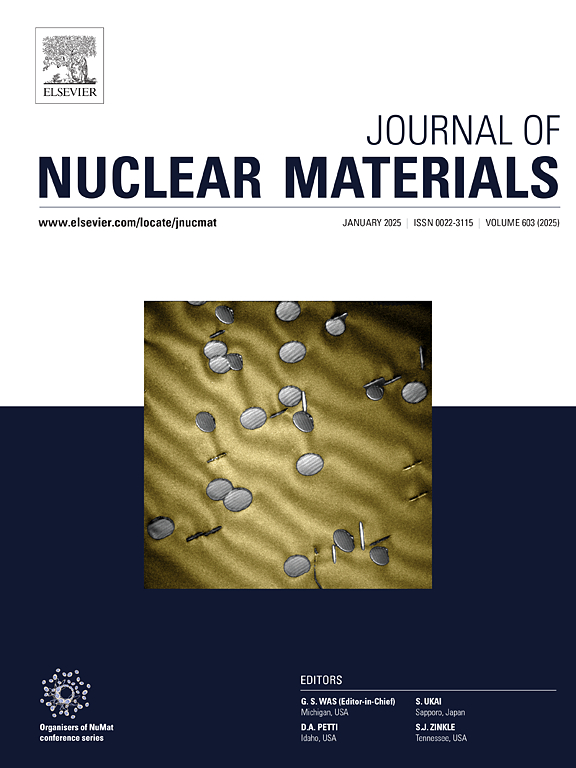Synergistic effect of simultaneous proton irradiation and molten lead-bismuth eutectic corrosion on FeCrAlTi(Mo) coatings
IF 2.8
2区 工程技术
Q3 MATERIALS SCIENCE, MULTIDISCIPLINARY
引用次数: 0
Abstract
The synergistic effect of simultaneous proton irradiation (with a total fluence of 2.0 × 1017 ions/cm2) and lead-bismuth eutectic (LBE) corrosion (at 550 °C for 46 h) on FeCrAlTi(Mo) coatings was investigated. The surface morphology, composition distribution, crystal structure of the formed oxide scale, and structural evolution of the two coatings were systematically analyzed using SEM and TEM. The corrosion results revealed the accelerated LBE corrosion behaviour of the proton-irradiated FeCrAlTi coating, which could be attributed to irradiation-induced defects leading to enhanced diffusion and irradiation-induced grain growth, resulting in the rapid formation of a protective oxide scale. However, proton irradiation decelerated the corrosion rate of the FeCrAlTiMo coating in high-temperature LBE, which could be attributed to the irradiation-induced annihilation of the free volume, which slowed down the diffusion dynamics. Whether proton irradiation accelerated or decelerated corrosion depended on the crystal structures of the FeCrAlTi and FeCrAlTiMo coatings during the corrosion process. Moreover, the novel mechanism of irradiation-decelerated corrosion provides a new concept for designing amorphous nuclear structural materials with improved synergistic corrosion and irradiation resistance.
求助全文
约1分钟内获得全文
求助全文
来源期刊

Journal of Nuclear Materials
工程技术-材料科学:综合
CiteScore
5.70
自引率
25.80%
发文量
601
审稿时长
63 days
期刊介绍:
The Journal of Nuclear Materials publishes high quality papers in materials research for nuclear applications, primarily fission reactors, fusion reactors, and similar environments including radiation areas of charged particle accelerators. Both original research and critical review papers covering experimental, theoretical, and computational aspects of either fundamental or applied nature are welcome.
The breadth of the field is such that a wide range of processes and properties in the field of materials science and engineering is of interest to the readership, spanning atom-scale processes, microstructures, thermodynamics, mechanical properties, physical properties, and corrosion, for example.
Topics covered by JNM
Fission reactor materials, including fuels, cladding, core structures, pressure vessels, coolant interactions with materials, moderator and control components, fission product behavior.
Materials aspects of the entire fuel cycle.
Materials aspects of the actinides and their compounds.
Performance of nuclear waste materials; materials aspects of the immobilization of wastes.
Fusion reactor materials, including first walls, blankets, insulators and magnets.
Neutron and charged particle radiation effects in materials, including defects, transmutations, microstructures, phase changes and macroscopic properties.
Interaction of plasmas, ion beams, electron beams and electromagnetic radiation with materials relevant to nuclear systems.
 求助内容:
求助内容: 应助结果提醒方式:
应助结果提醒方式:


